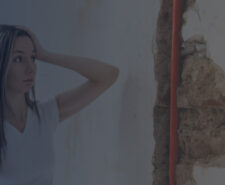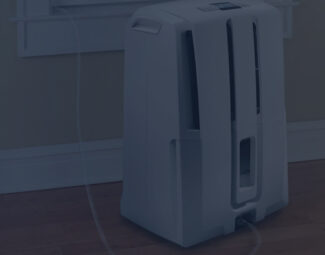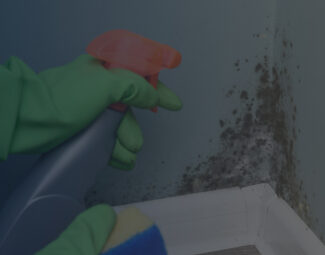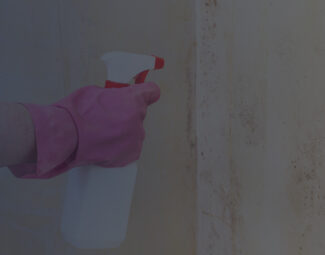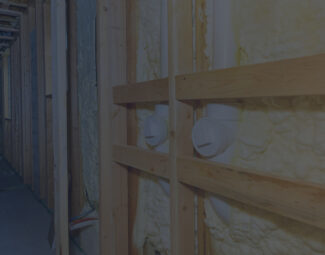H igh humidity inevitably leads to mold growth, something you must avoid at all costs as it has dire health implications. However, did you know that air moistness above the recommended level can take a toll on your home’s structural integrity as well? Yes, it’s true, there are more repercussions to high humidity than you likely thought, so instead of just scratching the surface, read this article to take an in-depth look at how dampness actually affects buildings, compromising their structure, which in turn leads to high repair and remediation costs, and potentially puts you at risk.

Moss and Spots on Ceiling Caused by High Humidity
How Moisture Affects the Building Envelope
Q: What is the building envelope?
A: The term refers to the outermost structure, which includes the floors, walls, and roof, basically all parts of the building that serve the purpose of preventing the elements from entering your home.
When the building envelope tightly resists thermal transfer, air infiltration, and moisture, your level of comfort while at home exponentially increases. Moreover, you won’t have to pay more than needed to cool down the space during summer or keep it warm when winter makes an appearance.
Moisture is inevitable to a small degree seeing how there are quite a few building materials that “breathe”, like drywall, insulation, and wood structures, the latter absorbing and releasing it quite easily depending on humidity levels.
Woefully, when it comes to the exterior structure, even the smallest crevices and cracks can pose an issue as air and water seep in through them, potentially creating proper growing grounds for mold, and even leading to wood rot. As some structural elements of the building are made with wood, you can see how this directly impacts building safety.
As air comes in through cracks, you will have to run the HVAC system for longer hours and more often than normally to create comfortable living conditions, which leads to higher energy costs.
If moisture builds inside the envelope, the materials in the structure deteriorate. The insulation in the walls and attic won’t resist temperature shifts as well and it might even rot, and mold will inevitably start to grow on wood structures, drywall, and insulation, compromising their durability and potentially endangering you as building integrity is left in a questionable state.
How Mold Affects Building Materials
When high moisture levels indoors are not addressed properly and in time, mold develops, and with it, a series of issues emerge, including structural damage. Mold can actually weaken walls and floors as it feeds on wet wood, so all parts of your home that are made with this material are put in danger.
Beware that the problem can come from the last place you generally think of – the crawlway. Without proper moisture management in the crawl space, as well as encapsulation of the area, high humidity will inevitably make an appearance there and ultimately affect living quarters as well. This spells bad news for the foundation as well, if moisture is not properly managed even leading to foundation shifts, so beware to not overlook this below-grade level of your home.
Check out the best dehumidifiers for crawl space to compare the top-rated moisture removing systems that are specially designed to fit this tight space and provide sufficient operational prowess to handle the high loads of moisture generally present here.

Woman Assessing Damage After Water Pipe Leak
Advice for Proper Moisture Management
Tips for exterior moisture management:
- Set up adequate attic ventilation.
- Check for cracks in the foundation and walls, and if you find any, seal them.
- Clean the gutters and make sure that they drain away from the foundation.
- Check for damaged roofing materials and replace them immediately if needed.
- Once per year, call in a contractor to clear the HVAC system drain pipe.
Tips for interior moisture management:
- Use a heavy-duty dehumidifier or a lower-capacity system, depending on the severity of the situation, so that you keep proper humidity levels indoors at all times. The system specifically tends to the removal of moisture from the air, so you can see why it is the optimal solution.
- If there are signs of plumbing leaks, check to find the source and call in a professional to fix it immediately. Otherwise, water settles into structural elements and you have more than just potential mold growth to worry about.
- Make sure that you always use the exhaust fans in the kitchen and bathroom when you perform activities that cause humidity levels to rise. During summer, it’s all the more important to do so as moisture levels tend to skyrocket faster because of the temperatures.
Conclusion
As dangers posed by high humidity for human health are quite plenty, especially seeing how moistness leads to mold development indoors, the last thing you want is to worry your mind with the dangers dampness poses for the building itself. However, the scary truth is that high humidity does take a toll on the structural integrity of your home if left undealt with, everything from wood structures, the foundation, floors, and walls having to suffer consequences. This, in turn, puts you not only in an undesirable spot as it means that you have to pay extra for repairs and to upkeep comfortable living conditions, but it can imply that your safety while at home is compromised as well. Thus, you can see why it’s mandatory to keep humidity in check, your well-being and that of your home depending on it.

